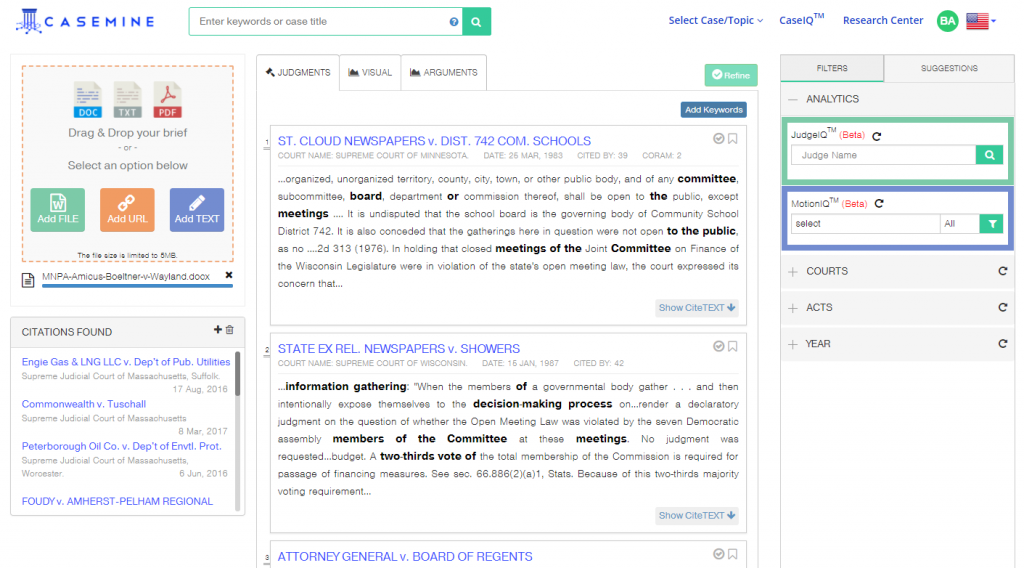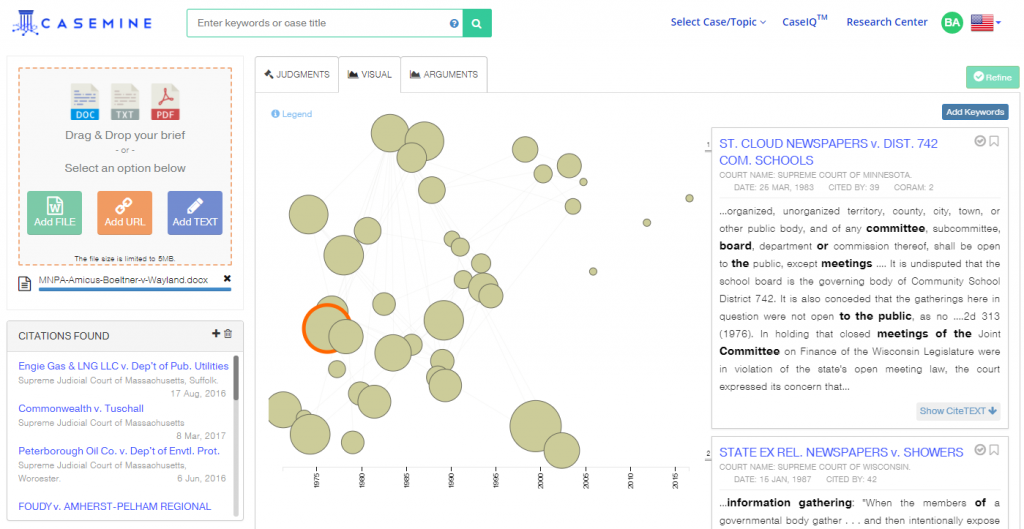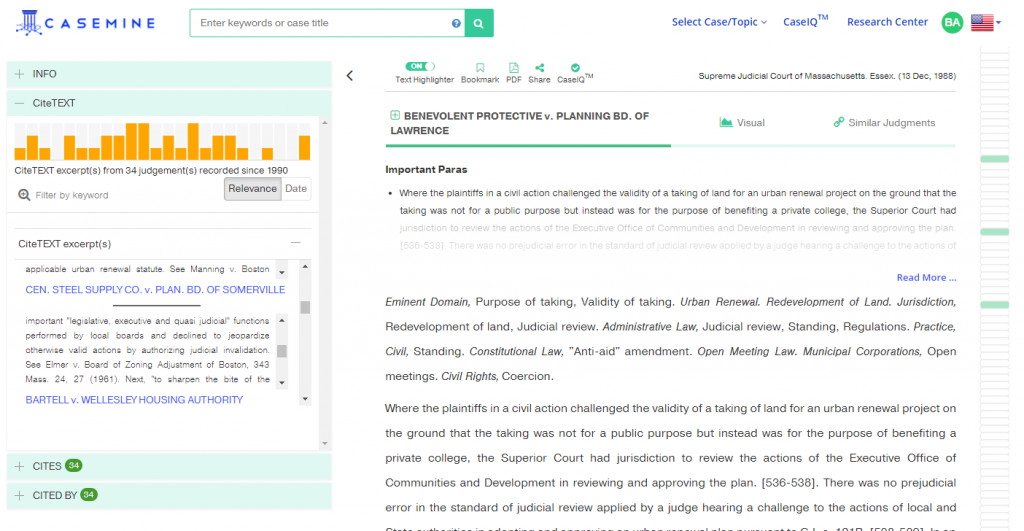I wrote yesterday about the launch of Attorney IO, a new brief-analysis product in the vein of CARA from Casetext, Clerk from Judicata, and EVA from ROSS Intelligence. Turns out there is yet another.
India-based legal tech startup Casemine launched the brief-analysis product CaseIQ 1.5 years ago for India law, and recently debuted a variant for U.S. law. It plans also to launch a UK variant soon.
Similar to other brief-analysis products, CaseIQ promises to deliver highly relevant search results by analyzing an uploaded brief or other legal document. From its website:
CaseIQ automatically analyzes the language of your legal document for cited case laws, statutes and legal argument patterns. It then feeds this information into a complex predictive algorithm that leverages the archived intelligence of legal experts who’ve explored these issues previously to compile a list of highly relevant case laws, thereby highlighting potential missing points of law, or alternative arguments not appraised prior.
In my post yesterday about Attorney IO, I uploaded a recent amicus brief I’d filed. I tried the same brief today using CaseIQ.
Whereas Attorney IO required 90 minutes to analyze my brief and presented only a minimal list of citations in the form of an email, CaseIQ analyzed my brief in seconds and presented a much richer visual display of the results. Three tabs showed the results in different ways — by judgments, visually in the form of a bubble map, and by arguments.
The results presented many more cases than had Attorney IO, but while my brief involved an issue of Massachusetts statutory law and statutory interpretation, many of the cases CaseIQ presented were from outside Massachusetts and of limited relevance to my issues.
CaseIQ provides various filters to narrow results, so I tried applying the filter to limit results to Massachusetts’ courts. For some reason, the first time I tried this, it seemed to erase my entire search. I uploaded the brief a second time and tried again, and this time it worked, presenting only Massachusetts cases.
In fact, erasing the search was a recurring problem. If at any time I navigated away from the CaseIQ results page, I’d have to upload the document all over again to return to the results. A “Research Center,” which seemed to be a place that saved and stored my searches, showed specific cases I’d looked at, but did not save my overall brief-analysis search.
I should point out that Casemine is intended to be a general legal research site that includes brief analysis. You can use the site without uploading a brief, just by searching keywords or a case name. When viewing a case, it presents an informative display of information about the case, including the citation, the attorneys involved, cited cases and text, and subsequent citations to the case.
CaseIQ includes two filters, both identified as “beta,” Judge IQ and MotionIQ. These appear to allow you to filter results by judge or procedural posture. I tried, for example, applying the filter for “motion for summary judgment” and my search results were narrowed to cases in which there had been a grant or denial of summary judgment.
The site could use a more robust help section. As mentioned, my search results included tabs for both Judgments and Arguments, but I never could decipher the difference in what those tabs delivered. It seemed that the Arguments tab arranged the results in a manner more relevant to my brief, but some explanation would have been nice.
I recently posted a video here showing a face-off between CARA from Casetext and EVA from ROSS. What’s needed — and maybe I’ll get around to it one of these days — is a head-to-head comparison of all these brief analyzers, using the same inputs.
Casemine offers a 15-day free trial, so if you are interested in seeing it for yourself, give it a try.
 Robert Ambrogi Blog
Robert Ambrogi Blog

